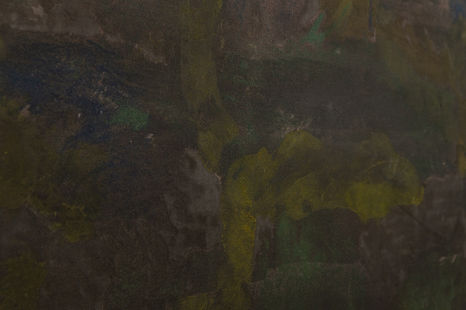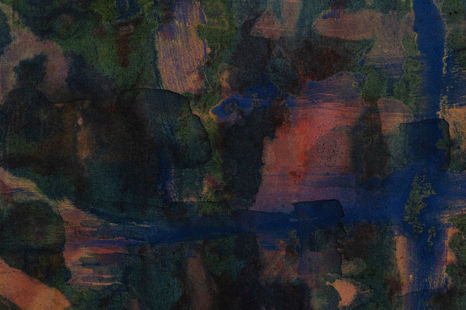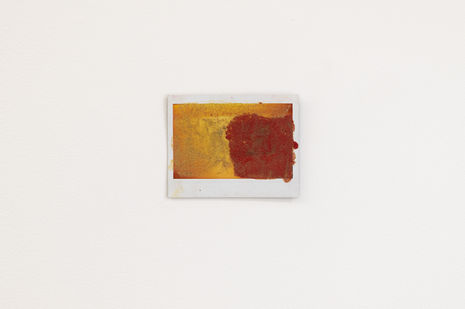past / 2015
Yuta Hayakawa / Daisuke Ishii / Motomasa Suzuki / Keizo Tawa "sculptures"
早川祐太/石井太介/鈴木素真/多和圭三
November 28 - December 26, 2015
past / 2015
Yuta Hayakawa / Daisuke Ishii / Motomasa Suzuki / Keizo Tawa "sculptures"
早川祐太/石井太介/鈴木素真/多和圭三
November 28 - December 26, 2015
past / 2015
Yuta Hayakawa / Daisuke Ishii / Motomasa Suzuki / Keizo Tawa "sculptures"
早川祐太/石井太介/鈴木素真/多和圭三
November 28 - December 26, 2015
Paris Internationale 2019
16 Rue Alfred de Vigny
75008 Paris
October 16 (wed) - 20 (sun), 2019
Preview: October 15, 2019
Paris Internationale 2019
16 Rue Alfred de Vigny
75008 Paris
October 16 (wed) - 20 (sun), 2019
Preview: October 15, 2019
CURRENT
Gallery Show
常設展
June 20 (Thu) - July 11 (sun), 2019
CURRENT
Gallery Show
常設展
June 20 (Thu) - July 11 (sun), 2019
CURRENT
Gallery Show
常設展
June 20 (Thu) - July 11 (sun), 2019
past / 2023
Gabriel Hartley ガブリエル・ハートリー
"Mosslight" 「モスライト」
August 26 (sat) - September 23 (sat), 2023
Reception for the artist: August 26, 6-7 pm
September 23 (Sat) 17:00 -
Gabriel Hartley, Stuart Munro, Reina Sugihara
ガブリエル・ハートリー
スチュアート・ムンロ(ライター、批評家) 杉原玲那(アーティスト)
Press Release

"Mosslight" 2023, installation view photo by Fuyumi Murata
"The paintings are made horizontally, unstretched on the floor. Working in this way the largest two canvases take up almost the entirety of the artist’s studio space.
Traces can be seen of the tatami in the cotton; which read not only as small brush marks, but also as windows, raindrops, people. As one looks at the paintings, different elements, forms, and colours come in and out of focus. Comparable to remembering an event, or perhaps misremembering.
The paintings in this series all start from a drawing, or from one of the artist’s painted photographs of moments recorded in Tokyo; the shadows cast by telephone wires, a bridge in Shinjuku gardens, light hitting a moss garden, a person reclining at a sento, a balcony in a tower block, a group of pruned pine trees in a front garden.
The image is often lost, sometimes refound - other drawings and images are allowed to enter the arena as the painting progresses, most importantly though - the logic of the painting is allowed to take over. One layer/action/ decision takes its cue in relation to the last action/ layer. The painting is a balancing act between finding and following leads and turning back and remembering very particular observed moments. The black ink complements this thinking. Applied in different levels of opacity, it acts to simultaneously conceal and reveal previous moments in the painting. It is similar to being in a dark space where as your eye adjusts to the darkness more forms and colours reveal themselves.
To take ‘Mosslight’ as an example. The paint has been applied from both back and front of the canvas, seeping through the very thin Tenkuji cotton to leave a floating memory of the original marks. The flowing black line dissolves into the printed white marks derived from the tatami floor. As one’s eye adjusts the green and yellow forms start to become more and more visible. They are hard to name, but have the distinct presence of something looked at, something registered by the mind. It is almost impossible to decipher which layer was painted when during the process of making.
These paintings ask us to make decisions about where to look - which element to focus on - only to usher us quickly away along other paths."
「ペインティングは水平に描かれ、木枠に張らない状態で床に置かれる。こうして描かれた最も大きな2枚のキャンバス作品は、作家のアトリエのほとんどを埋め尽くしている。
綿の画面に畳の跡が見えるが、それは小さな筆跡としてだけでなく、窓や雨粒、人物のようにも読める。 絵を見ていると、さまざまな要素、形、色彩が浮かんでは消える。それは、ある出来事を思い出すことに似ている。
このシリーズのペインティングはすべて、ドローイング、もしくは東京での瞬間を記録したポラロイド写真にペイントしたものから始まっている。電話線が落とす影、新宿の庭園の橋、苔庭に当たる光、銭湯でくつろぐ人、タワーマンションのバルコニー、剪定された松の木の群れなど。
イメージはしばしば失われ、時に再発見される。絵が進むにつれ、他のドローイングやイメージが登場することもあるが、最も重要なのは、絵画の論理が優先されることだ。あるレイヤー/アクション/決断は、最後のアクション/レイヤーとの関係においてその指示を受ける。絵画は、手がかりを見つけ、それに従うことと、振り返り、観察された特定の瞬間を思い出すことのバランスをとる行為なのだ。 墨はこの思考を補完する。さまざまな不透明度で塗られた墨は、絵画の中で以前起こった瞬間を隠すと同時に明らかにする働きをする。それは、暗い空間に入ったとき、目が暗闇に慣れるにつれて、より多くの形や色が姿を現すのに似ている。
「mosslight」を例に取ろう。絵の具はキャンバスの裏と表の両方から塗られ、非常に薄い天竺木綿を透過して、元の痕跡の記憶を浮き上がらせている。 流れるような黒い線は、畳によってつけられた白い跡に溶け込む。目が慣れてくると、緑と黄色の形がだんだん見えてくる。名前をつけるのは難しいが、何かを見ているような、心に記録されたような、はっきりとした存在感がある。制作の過程で、どの層がいつ描かれたのかを読み解くことはほとんど不可能だ。
これらの絵画は、私たちにどこを見るべきか、どの要素に焦点を当てるべきかの決断を求め、すぐに私たちを別の道へと遠ざけるだけなのだ。」
[TALK EVENT トークイベント]
September 23 (Sat) 17:00 -
Gabriel Hartley, Stuart Munro and Reina Sugihara
ガブリエル・ハートリー, スチュアート・ムンロ, 杉原玲那
*主に英語での鼎談となります。
<Profile>
杉原玲那 Reina Sugihara
英国・ロイヤル・カレッジ・オブ・アート修了。主な展⽰に "Frame" MISAKO & ROSEN (2022, 東京)、"No cinders remain in ashes, but" LAVENDER OPENER CHAIR(2021, 東京)、"Under auspices of n/a/s/l" AGUIRRE(2021, メキシコシティ)、"FAKERS" Thames-Side Gallery(2018, ロンドン)、"The Barren Slope" Safehouse1(2018, ロンドン)、"Living Room presented by imlabor and Cypher Collectives" Safehouse1&2(2018, ロンドン)、"Time-Poor Dreamers" Cypher Space(2018, ベルリン)など。
スチュアート・ムンロ Stuart Munro
東京を拠点に活動するライター、評論家、研究者。宇和島のアトリエで大竹伸朗にインタビューしたほか、フランスの画家Charles Munkaやベルギーの画家Pieter Vermeerschのカタログエッセイを執筆、東京ではChristoph MeierとUte Müllerの二人展をキュレーションするなど、多岐に渡って活躍している。なあ、Art Basel、ArtReview、Mousse、The Wire magazineなどに寄稿し、国際的な執活動を行っている。
Reina Sugihara
Graduated with an MA in Painting from the Royal College of Art, having completed a BA at Tokyo University of the Arts. Her group exhibitions include: "Frame" MISAKO & ROSEN (2022, Tokyo), "No cinders remain in ashes, but" LAVENDER OPENER CHAIR (2021,Tokyo), "Under auspices of n/a/s/l" AGUIRRE (2021, Mexico City), "FAKERS" Thames-Side Gallery (2018, London), "The Barren Slope" Safehouse1 (2018, London),"Living Room presented by imlabor and Cypher Collectives" Safehouse1&2 (2018, London), "Time-Poor Dreamers" Cypher Space (2018, Berlin)etc.
Stuart Munro is a writer, critic and researcher based in Tokyo. Among other things, he has interviewed Shinro Ohtake at his studio in Uwajima, written a catalogue essay for the French artist Charles Munka, the Belgian painter Pieter Vermeersch and curated an exhibition in Tokyo for Vienna-based artists Christoph Meier and Ute Müller. He has published internationally, writing for Art Basel, ArtReview, Mousse, The Wire magazine and more.





















